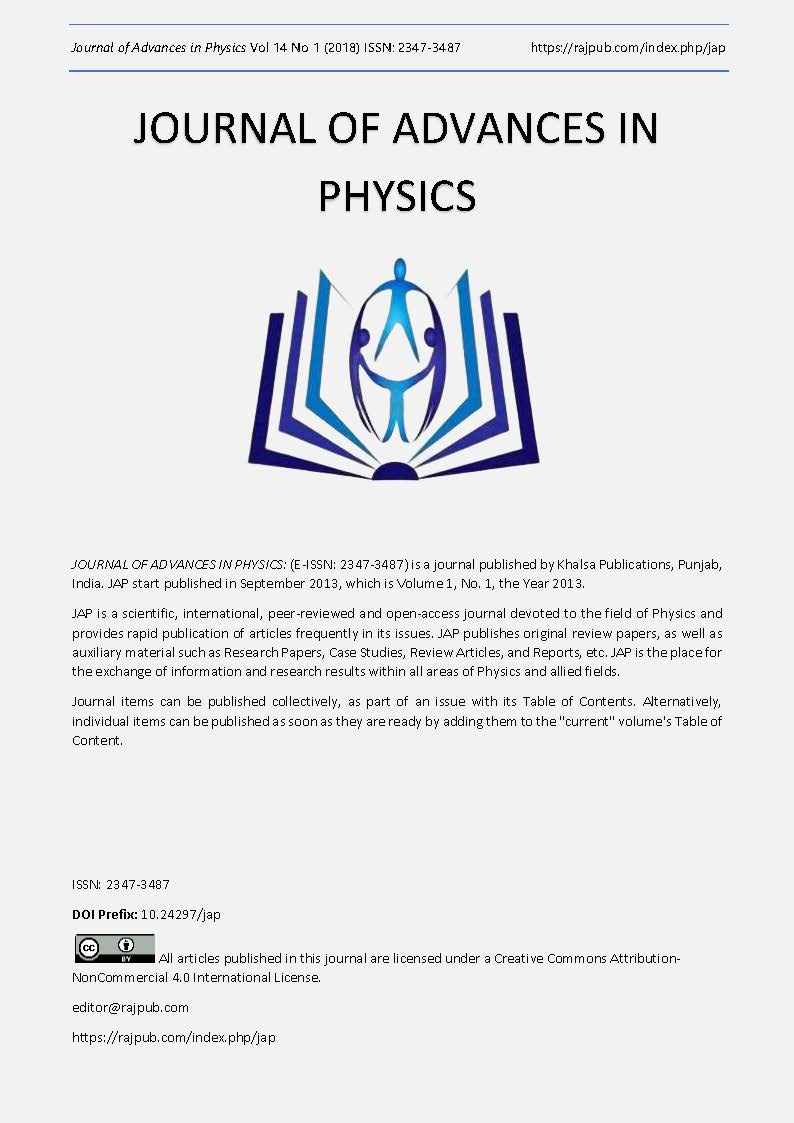Photovoltaic Modules for Indoor Energy Harvesting
DOI:
https://doi.org/10.24297/jap.v14i1.7063Keywords:
Energy harvesting, solar modules, artificial lights, output power densities, emission spectraAbstract
This paper presents the performance of indoor energy harvesting systems based on different photovoltaic modules (monocrystalline silicon, polycrystalline silicon, amorphous silicon and polymer) and artificial electric lighting sources (incandescent, fluorescent and cool white flood LED). In this concern, it is clearly proved that, maximum output power densities to be harvested from the photovoltaic module depends mainly on the spectral responses of both the light source and the module material. Herein, and from the study, experimental work, results and analysis, it is clear that monocrystalline silicon is the optimum solution for all light sources, followed by polycrystalline, whenever used with spot-and incandescent - lamps. On the other hand, amorphous samples were proved to be lightly sensitive to fluorescent light and cool white flood LED. Finally, polymer samples were weakly responded whenever exposed to any of the investigated light sources.
Downloads
References
Ian Mathews, Paul J. King, Frank Stafford, and Ronan Frizzell. Jan. 2016. Performance of III–V Solar Cells as Indoor Light Energy Harvesters. IEEE Journal of Photovoltaics, Vol. 6(1).
Giulia Lucarelli, Francesco Di Giacomo1, Valerio Zardetto, Mariadriana Creatore, and Thomas M. Brown. 2017. Efficient light harvesting from flexible perovskite solar cells under indoor white light-emitting diode illumination. Nano Research, Vol. 10(6), pp. 2130–2145.
Tushar Sawant, Rahul Chaube, Mithil Shah, Abhishek Sharma. March 2017. Energy Harvesting and Recycling From Artificial Light Sources. International Journal of Research In Science & Engineering, Special Issue 7-ICEMTE, pp. 297-301.
Francesca De Rossi, Tadeo Pontecorvo and Thomas M. Brown. 2015. Characterization of photovoltaic devices for indoor light harvesting and customization of flexible dye solar cells to deliver superior efficiency under artificial lighting. Applied Energy, Vol. 156, pp. 413–422.
D. Manimegalai and S. Meenakshi. October 2016. Energy Harvesting from Solar Cells under Electric Lighting Sources In Indoors. ARPN Journal of Engineering and Applied Sciences, Vol. 11(19).
Yi Li, Neil J. Grabham, Steve P. Beeby, John Tudor. 2013. Energy Harvesting From Solar Cells Under the Typical Illumination Types Encountered in Buildings. Nanoenergy Letters.
Ben Minnaert and Peter Veelaert. 2014. A Proposal for Typical Artificial Light Sources for the Characterization of Indoor Photovoltaic Applications. Energies, Vol. 7, pp. 1500-1516.
D. Manimegalai and S. Meenakshi. October 2016. Energy Harvesting From Solar Cells Under Electric Lighting Sources in Indoors. ARPN Journal of Engineering and Applied Sciences, Vol. 11(19), pp. 11395 - 11402.
John Keane. 2014. Pico-solar Electric Systems. Routledge.
M Tripathy, P K Sadhu. May 2015. Building integrated photovoltaic market trend and its applications. TELKOMNIKA Indonesian Journal of Electrical Engineering, Vol. 14(2), pp. 185 – 190.
Ahmed A. Mohamed, Yehia Selim. March 2017. Factors affect dye sensitized solar cells performance", Renewable Energy and Sustainable Development (RESD) Vol. 3(1), Special Issue, pp. 83-86.
Downloads
Published
How to Cite
Issue
Section
License
 All articles published in Journal of Advances in Linguistics are licensed under a Creative Commons Attribution 4.0 International License.
All articles published in Journal of Advances in Linguistics are licensed under a Creative Commons Attribution 4.0 International License.




